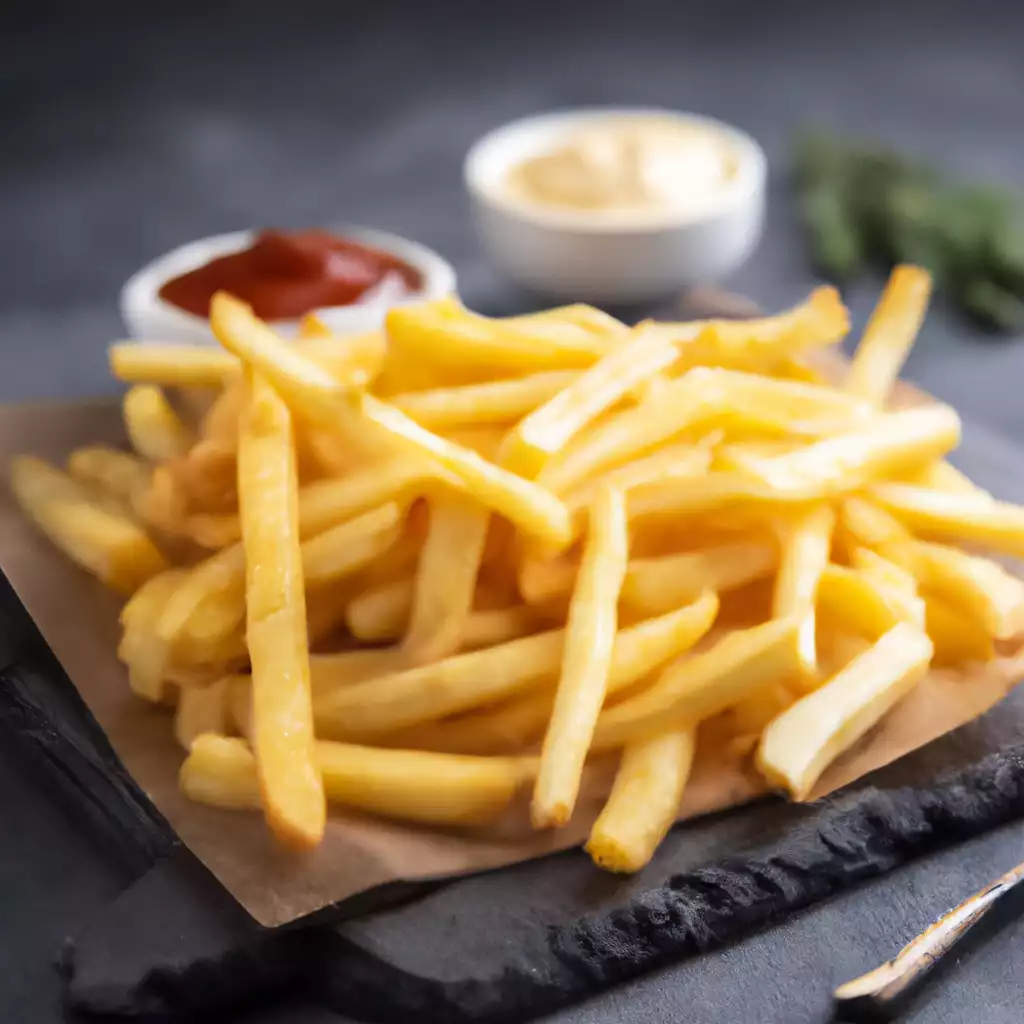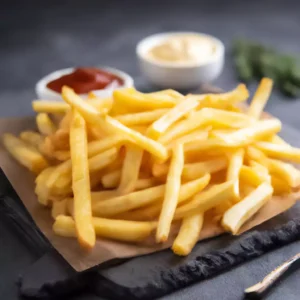
Who doesn’t love crispy, golden French fries? Originating from Belgium, this beloved snack has become a global favorite, adorning plates in homes, diners, and fancy restaurants alike.
Despite its simplicity, achieving that perfect balance of crispy exterior and fluffy interior can be a challenge for home cooks. Fear not, for I am here to guide you through the process step by step, ensuring your homemade French fries are nothing short of spectacular.
Crafting the perfect French fry begins with selecting the right potatoes. Maris Piper potatoes are ideal for this recipe, known for their high starch content and ability to achieve that coveted crispy texture. Paired with vegetable oil for frying, these two ingredients form the foundation of our delicious snack.
Expert Tip: For a healthier alternative, try baking your fries instead of frying. Simply toss the potato sticks with a small amount of oil and bake in a preheated oven until crispy and golden brown.
Potatoes (Maris Piper): Maris Piper potatoes are renowned for their perfect balance of starchiness and moisture. This variety of potato ensures that your fries will have a fluffy interior while crisping up beautifully on the outside.
Vegetable Oil: Vegetable oil serves as the medium for frying, imparting a crispiness to the exterior of the fries while maintaining a light, neutral flavor. Its high smoke point makes it perfect for achieving that golden brown perfection without imparting any unwanted taste.
Expert Tip: For extra flavor, season your fries with a sprinkle of garlic powder, paprika, or your favorite herbs and spices before serving.
Expert Tip: Ensure the oil is at the correct temperature before frying the potatoes. Use a thermometer to gauge the temperature accurately.
Achieving the perfect crispiness requires double frying. The first fry cooks the potato through, while the second fry at a higher temperature crisps up the exterior, resulting in that desired crunch.
While Maris Piper potatoes are recommended for their ideal texture, you can experiment with other varieties such as Russet or Yukon Gold. Just be aware that the texture and crispiness may vary.
Soak the potatoes for at least 30 minutes to remove excess starch, which helps prevent the fries from sticking together and promotes crispiness.
Yes, you can reuse frying oil. Allow it to cool completely, then strain it through a fine-mesh sieve or cheesecloth to remove any debris. Store it in a cool, dark place and use it for frying again within a few weeks.
To prevent soggy fries, make sure to thoroughly drain and pat dry the potatoes before frying. Additionally, serve the fries immediately after frying for the best texture.
Here are some more recipes for you to enjoy! If you my recipes don’t forget to rate and leave a comment.
If you have any recipe suggestions, please do not hesitate to ask me. A great way to stay in contact with me is through Instagram, Facebook, Twitter and YouTube. Don’t forget to tag me @CookwithNabeela in your recipe photos!

Subscribe now to receive my latest recipes directly in your inbox. Stay up-to-date and never miss out!

I love to cook! I want to share with you my favourite, delicious family-friendly recipes. I want to inspire you to create fantastic food for your family every day.
Add your first comment to this post